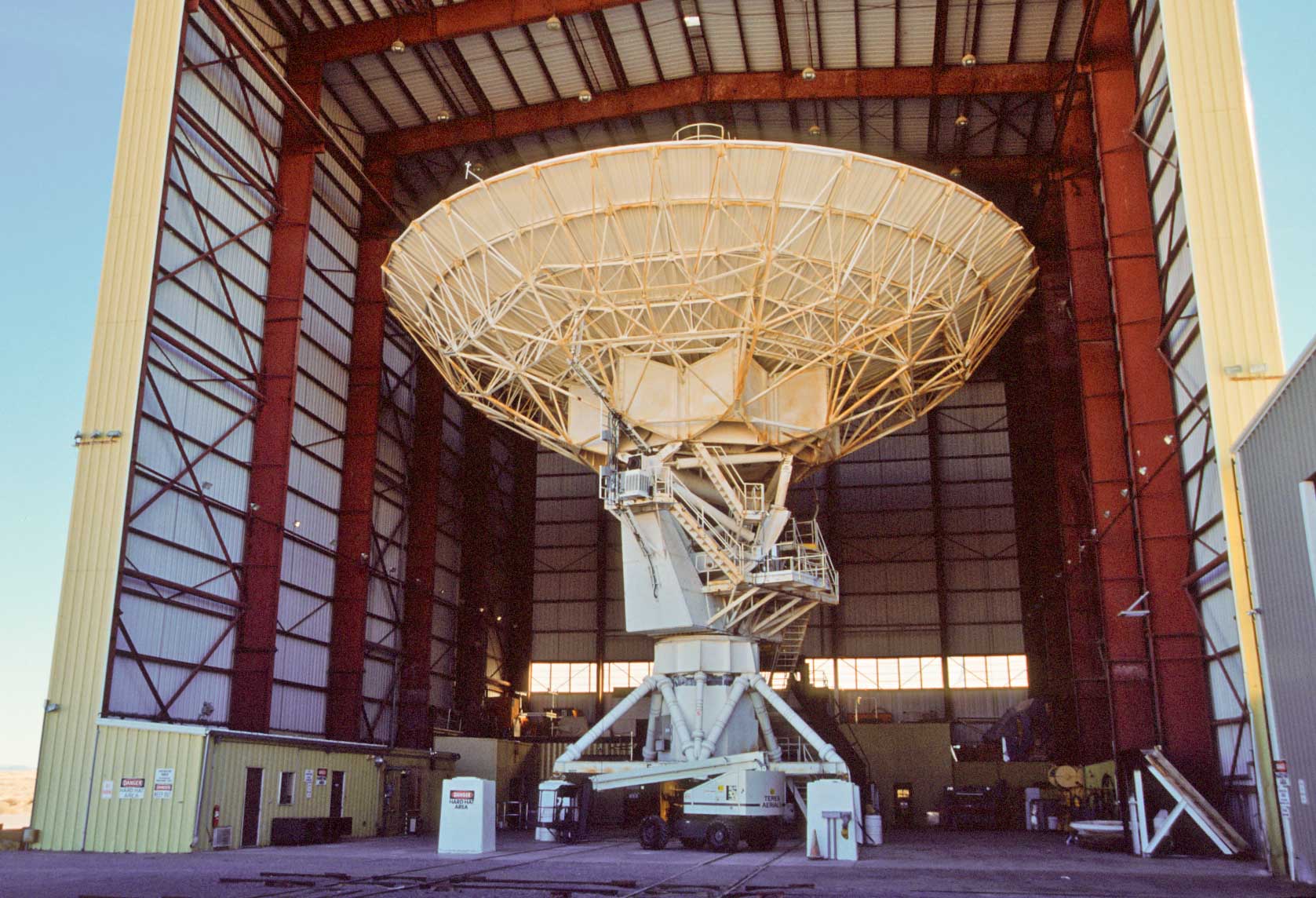Very Large Array
The Very Large Array is a complex of 27 radio antennas located fifty miles west of Socorro, New Mexico. The VLA, located at an elevation of 6970 ft, is a component of the National Radio Astronomy Observatory (NRAO). An astronomer named Ronald Bracewell created a radio telescope in 1961 using an X-shaped array of 32 10-foot diameter dish antennas set on concrete piers. Bracewell had visiting astronomers chisel their signatures into the concrete (piers for peers). Some of the concrete piers are now part of a memorial to Dr. Bracewell. The memorial is a sundial at the entrance of the Very Large Array (VLA). Ten of the 6-foot piers mark the hours. The central portion of the sundial is a concrete slab with a metal sphere mounted on a post in the middle. Markers embedded in the slab indicate the time of day when the shadow of the metal sphere falls on them.
On March 31, 2012, the VLA was officially renamed the "Karl G. Jansky Very Large Array" in a ceremony inside the Antenna Assembly Building. The visitor center at the VLA provides information on its scientific achievements, movies filmed at the VLA, and a variety of other subjects. The Bracewell sundial is located just outside along with other exhibits demonstrating the use of parabolic dishes in receiving and transmitting radio and sound waves. The Antenna Assembly Building and other support structures and equipment are located just a short distance from the visitor center.
The VLA is used to investigate many astronomical objects such as radio galaxies, quasars, pulsars, black holes, supernova remnants, and gamma ray bursts. Congressional approval for the VLA project was given in August 1972, and construction began some six months later. The first antenna was put into place in September 1975 and the complex was formally inaugurated in 1980, at a total cost of $78,500,000. The VLA is comprised of 27 antennas, each of which has a dish diameter of 82 feet and weighs 230 tons. The total array has the resolution of an antenna 22 miles across with the sensitivity of a dish 422 feet in diameter. The antennas are distributed along the three arms of a track in a Y-configuration. Each arm of the Y is 13 miles long. The antennas can be relocated using lifting locomotives nicknamed Hein's Treins that run on tracks along each arm of the Y. This allows the array to function essentially as a single antenna with a variable diameter. The array uses four main configurations, designated A (the largest) through D (the smallest). The observatory normally cycles through the configurations every 16 months, with antennas moved every three to four months. A 10 year long upgrade was completed in 2011 which resulted in the VLA expanding its technical capacities by factors of as much as 8,000. With the newest upgrades to the original 1970s technology, the VLA has evolved into the Expanded Very Large Array (EVLA).
The Long Wavelength Array (LWA) is a radio telescope located near the VLA. It is one of the few observatories designed to operate at lower frequencies (10-88 MHz), and is used to study quantum particles, cosmic evolution, astrophysical plasma, and giant solar flares. It currently consists of one station with 256 antennas. The goal of the project is to build a total of 53 stations containing 13,000 antennas placed across an area about 250 mi in diameter. Each antenna is about 5 ft high and 9 ft across the base.
This concludes our tour of the Very Large Array. Background information obtained from Wikipedia and online VLA sources.
Use the form on the Home Page to submit comments, questions, or suggestions. TD Productions Copyright © 2018

